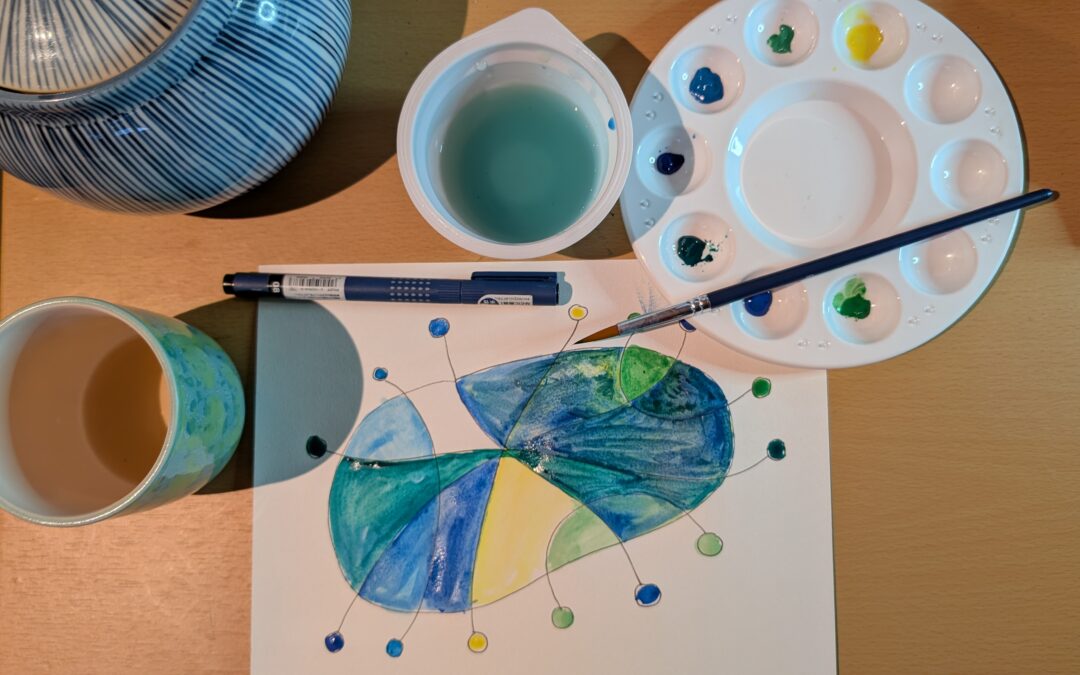If you want to tangle up your brain and give your conscious mind a lot to focus on while your subconscious gets insight on a problem, this Drawing Meditation is for you.
You’ll be developing a framed space then layering colors over one another using a couple of simple rules. It can get confusing and messy and there’s lots of adjustment along the way.
Doing this with watercolors is the ideal options, because watercolor as a medium as a mind of its own. It runs and forms pools. It splotches and smears. It’s lots of fun! And as a meditation exercise, it requires you to abandon expectations and to react to situations.
But if you don’t have watercolors, colored pencils will work, too. In fact, I used them in some of my my examples below.
Materials
I believe that art can be done with any materials you have at hand. Reusing, recycling and reducing is the best. But if you want to buy things new or special, I have shared some products link through the Amazon Affiliate program and and I’ll get a little bonus if you purchase them:
- Pen(s) – A ballpoint will be fine. Anything that’s waterproof. I usually reach for my fine point Micron Pigma pens.
- Watercolor paper – my go-to is the Maruman B4 size S120 spiral bound sketchbook. It’s great all-purpose paper.
- Brushes – At least one medium one for filling in and one small for details. This inexpensive Amazon Basics brush set has all the standards plus my favorite brush, the filbert.
- Watercolor paints – In class I use tube watercolors because they are easy to share, but I prefer pan sets like this Mont Marte 12 color pan watercolor set
- Water – in a spray bottle if you are using pan colors. Otherwise in a cup or jar.
- Wash cup – to rinse between colors or pick up extra water. Empty (and cleaned) yogurt container works great for this.
- Paint palette – a must if you are using tube colors. These are the ones I use in workshops: https://amzn.to/40XNUNu
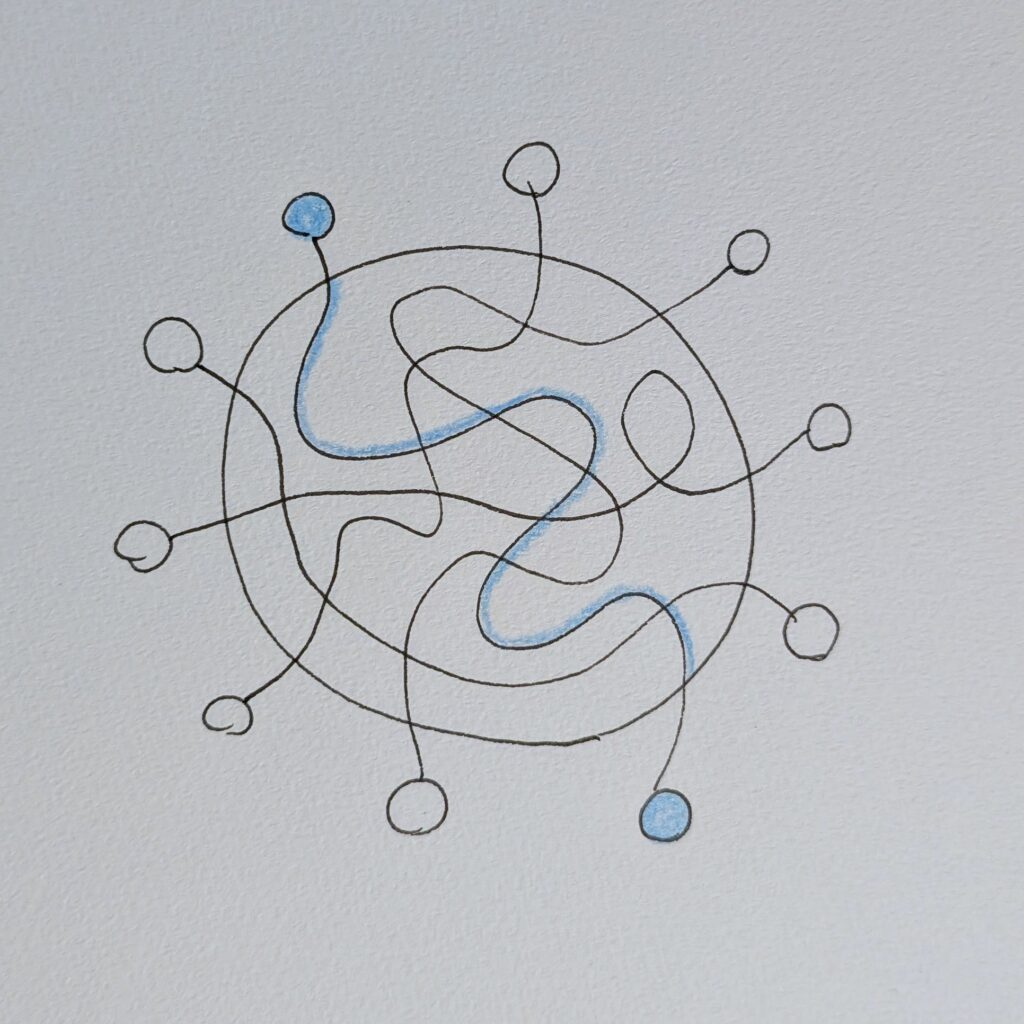
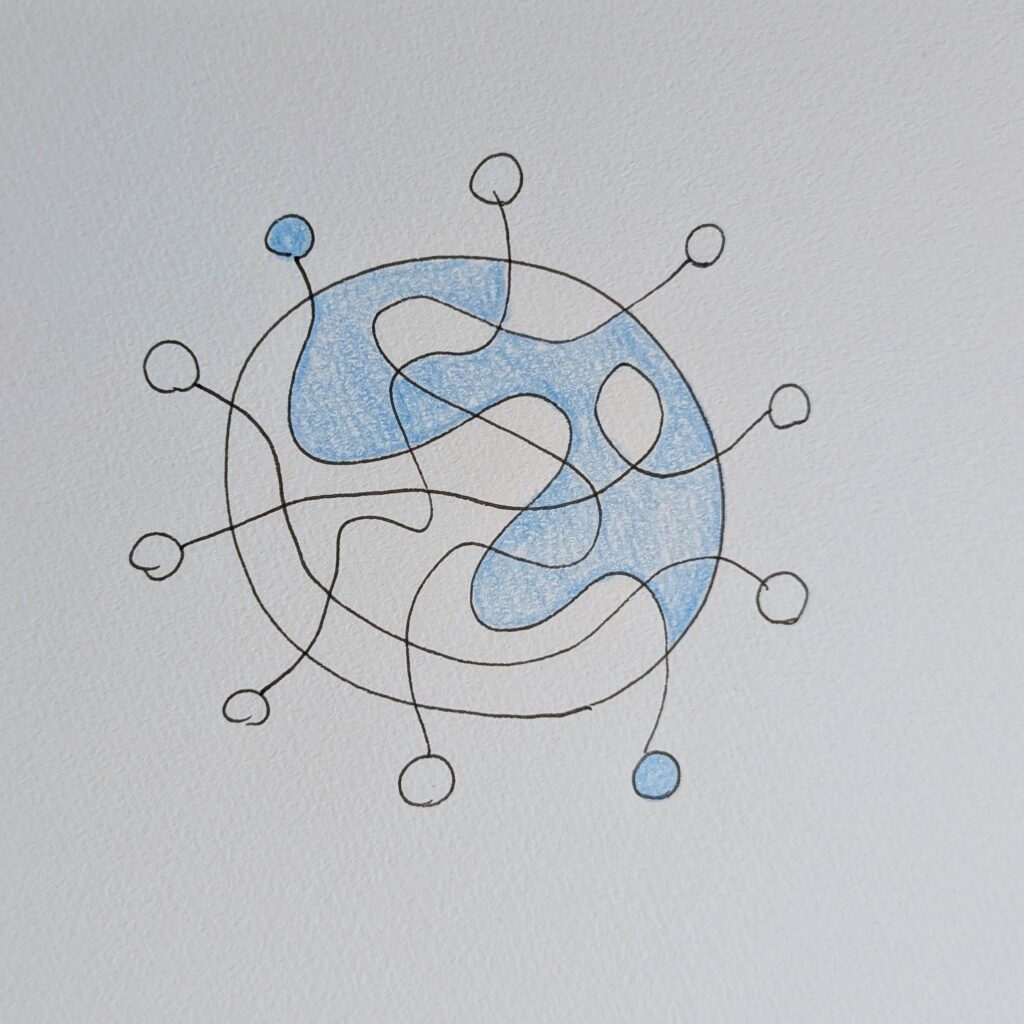
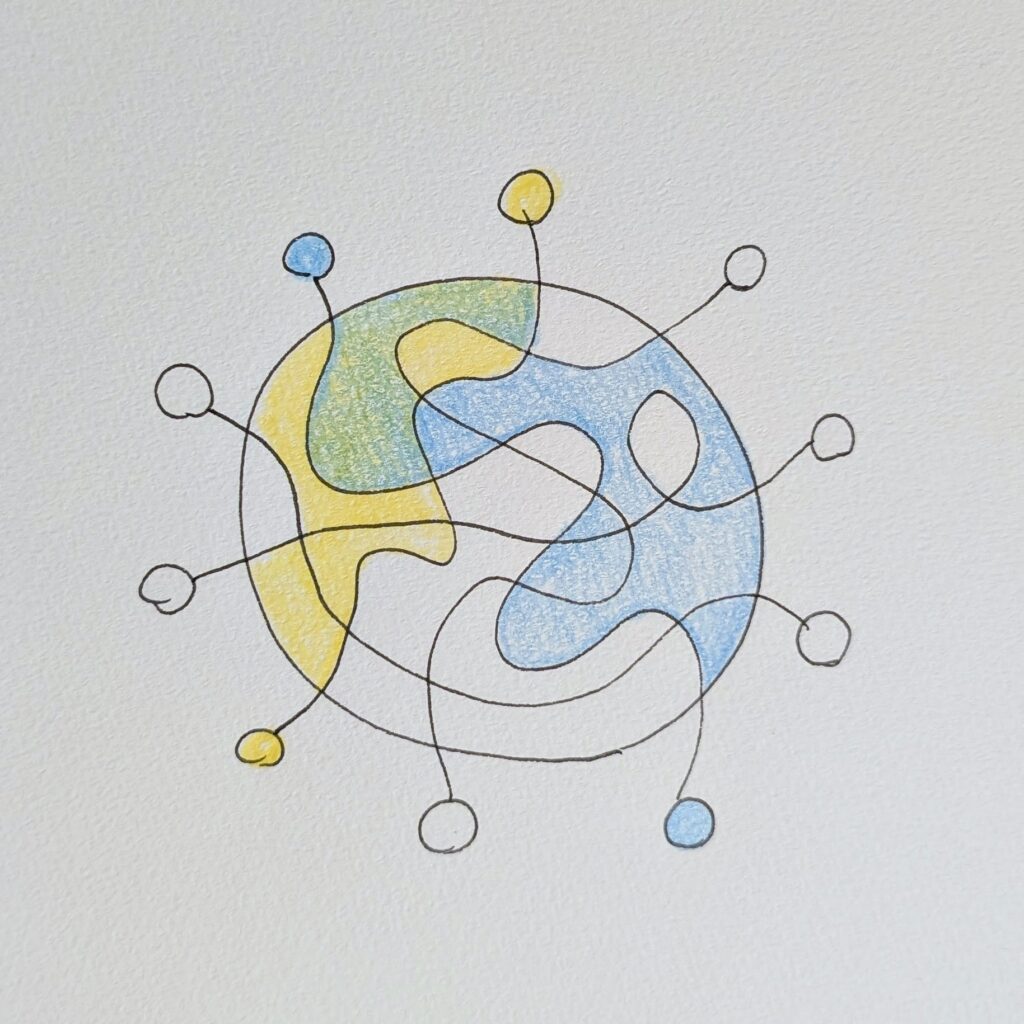
Instructions
- Before you begin drawing, set yourself something to think about in the background. You’ll come back to this at the end. For example, you might
- Ask yourself a question
- Bring to mind something that’s been bothering you
- Pick an oracle card from any deck you have
- Think of a guiding word
- Draw a circle-ish shape. A bean is fine. It doesn’t need to be precise.
- Make small circles around the big circle. 10 or 12 is a good number. More makes the exercise deliciously complex.
- With a generously wavy line, connect two circles across the big circle.
- Pick two different small circles and connect.
- The circles don’t have to be exactly across from one another.
- Keep going until you have matched up all the circles with wavy lines.
- Let the waves criss-cross and be organic and flowy.
- You want to end up with lots of sections.
- Some lines can cross at the center, but be careful not to make a pie.
- Prepare your paint.
- Either spray your pan paints with water, or squeeze tube paints into a palette.
- Wet your brush & get some paint on it
- Use plenty of water; you want to keep the paint translucent.
- Pick a starting line (see example above)
- Put a dot of your color in the circles at both the ends of the line you selected.
- Decide which side of the line you’ll paint. Right or left? Top or bottom?
- Trace a thin stripe along the side of the line as a guide
- Any section that the colored line touches, you’re going to fill in.
- If the wave doesn’t touch a section, don’t paint it
- In the Step 7 example above, the blue line touches 7 different sections.
- Repeat until all the lines have been colored to one side or the other.
- You can paint the second color right away, or let the first paint dry a little bit
- Colors will begin to layer to form new colors.
- Some sections may display only one color
- Some might be empty
- When the paint behaves unexpectedly, get creative. You might consider:
- Blotting the water with a tissue
- Tilting the paper to let the color run
- Creating patterns in the paint with the tip of the brush
- In any empty sections, you can choose to add color, draw a pattern, leave empty, or whatever makes sense to you.
- When you feel that you are finished with all the lines, situations, and empty spaces, then return your conscious thought to what you chose to think about in step 1.
- Do you have different feelings about that topic?
- Can you make any connections between your topic and the painting you made?
- Between your topic and the process?
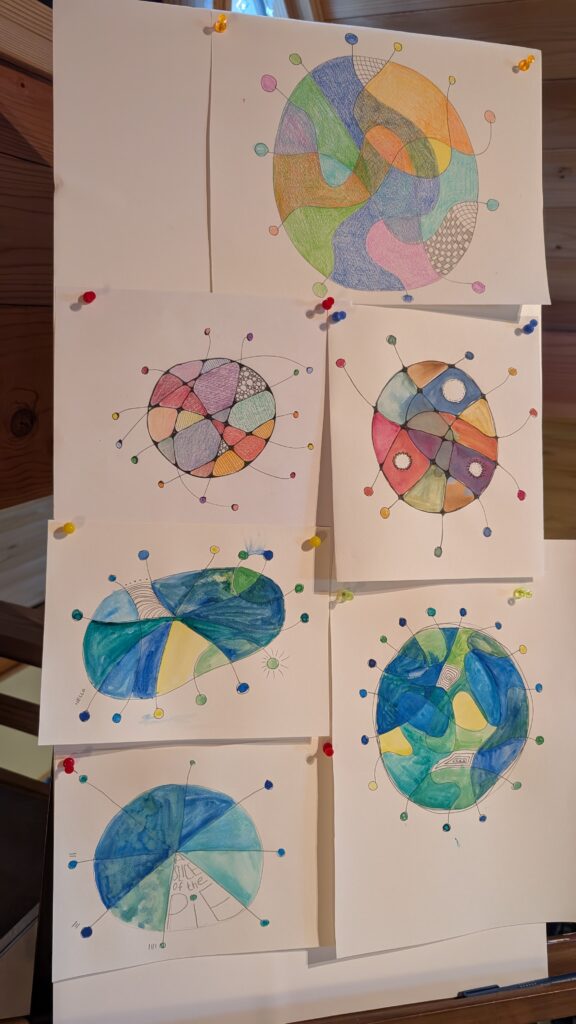
About Drawing Meditations
Drawing Meditations takes away the need to “do it right” and gives you space to be while also satisfying your need to do. As you create, you are guided to reflect on the topic of the meditation or simply relax your mind. Your dreamy subconscious and practical inner critic find harmony.
The meditation gives your subconscious a chance to chew over ideas, play, and relax while the conscious mind practices what it learned. It doesn’t matter if you are an artist or not. The goal is not to create that “perfect vision” image. The process is the key. One of the things that I love about this technique is that nearly everyone in our classes has an “aha moment” and a peek into their own hidden thoughts.

